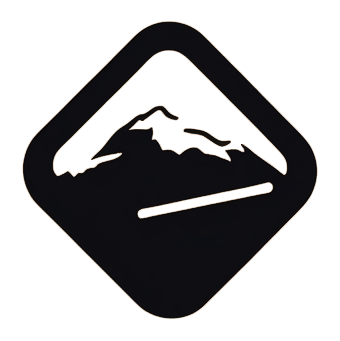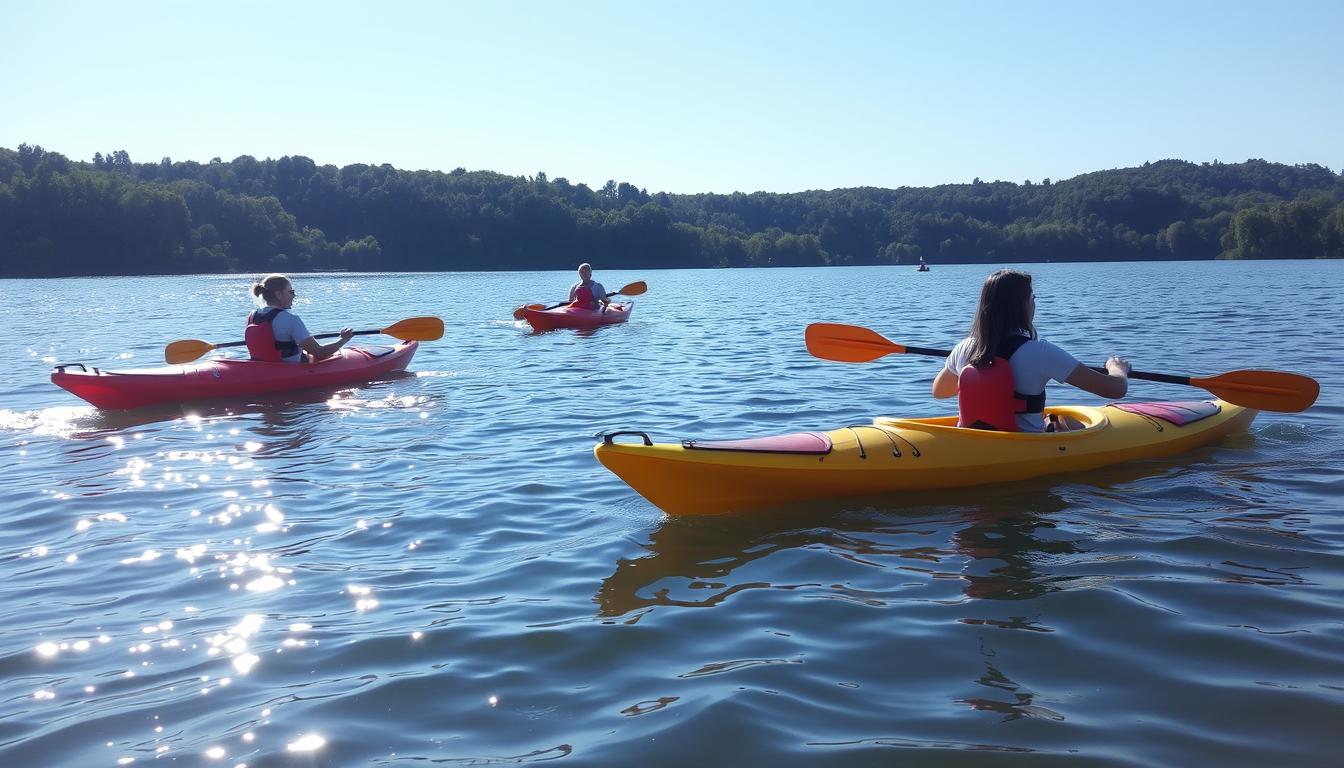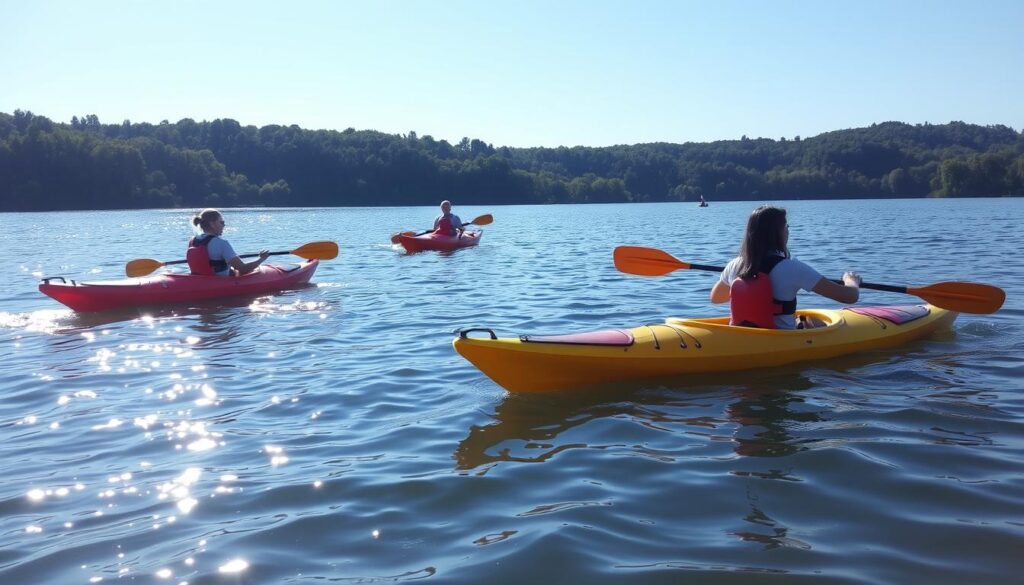
Is kayaking easy? The first time I held a kayak paddle, my hands shook with excitement and doubt. The water looked like an open door to adventure, making me wonder if kayaking is easy for beginners. That moment changed how I saw outdoor adventures.
Kayaking might look tough for newbies, but it’s actually accessible. You don’t need to be super strong or have special skills to enjoy paddling on calm waters. Learning to kayak is easier than most think.
This guide will clear up the mystery of kayaking. You’ll learn key techniques that make learning fast. From knowing your gear to mastering paddling, you’ll see that kayaking is fun and open to all who want to try.
Understanding Kayaking Fundamentals: What to Expect as a Beginner
Starting your kayaking journey might feel daunting. But knowing the basics makes it easier and more fun. Every pro paddler was once a beginner, eager to dive into the water world.
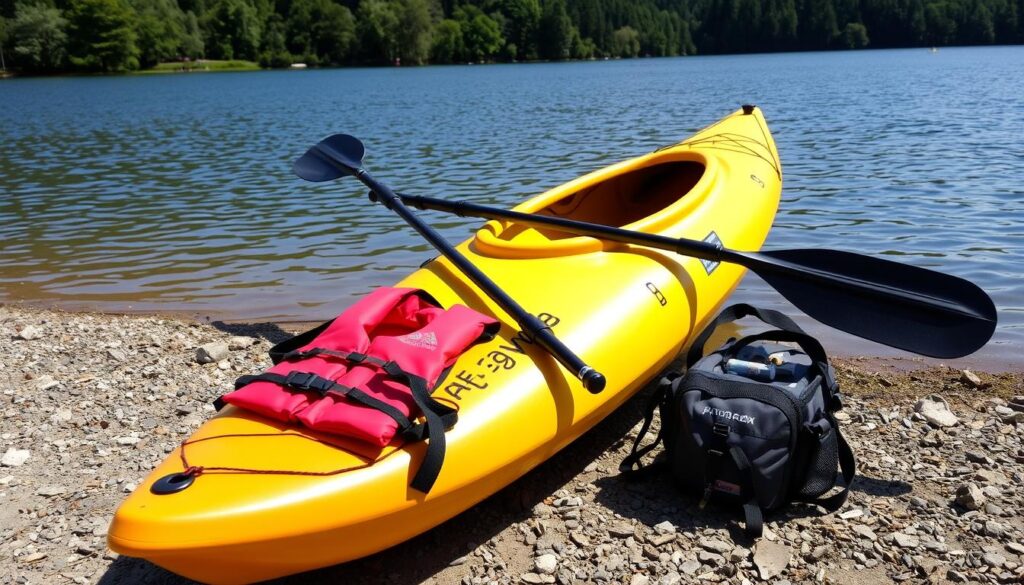
Basic Equipment and Safety Gear
Before you paddle, you need the right gear for safety and comfort. Your kit should include:
- Personal flotation device (PFD)
- Sturdy paddle
- Waterproof clothing
- Helmet for rough water conditions
- Dry bag for personal items
“Safety first” is the golden rule when learning kayaking.
Different Types of Kayaks for Beginners
Choosing the right kayak is crucial for a good learning experience. Beginners should start with recreational kayaks. They are stable and comfy.
| Kayak Type | Best For | Stability |
|---|---|---|
| Sit-on-Top Kayaks | Calm waters, learning | High |
| Recreational Kayaks | Lakes, slow rivers | Medium-High |
| Inflatable Kayaks | Beginners, storage | Medium |
Essential Paddling Terms You Should Know
Learning kayaking means getting familiar with key terms. Important ones include:
- Stroke: Paddling movement
- Edging: Tilting kayak for turning
- Bracing: Preventing capsizing
With these basics, you’re ready to begin your kayaking journey. It will be easier and more enjoyable.
Is Kayaking Easy? Breaking Down the Learning Curve
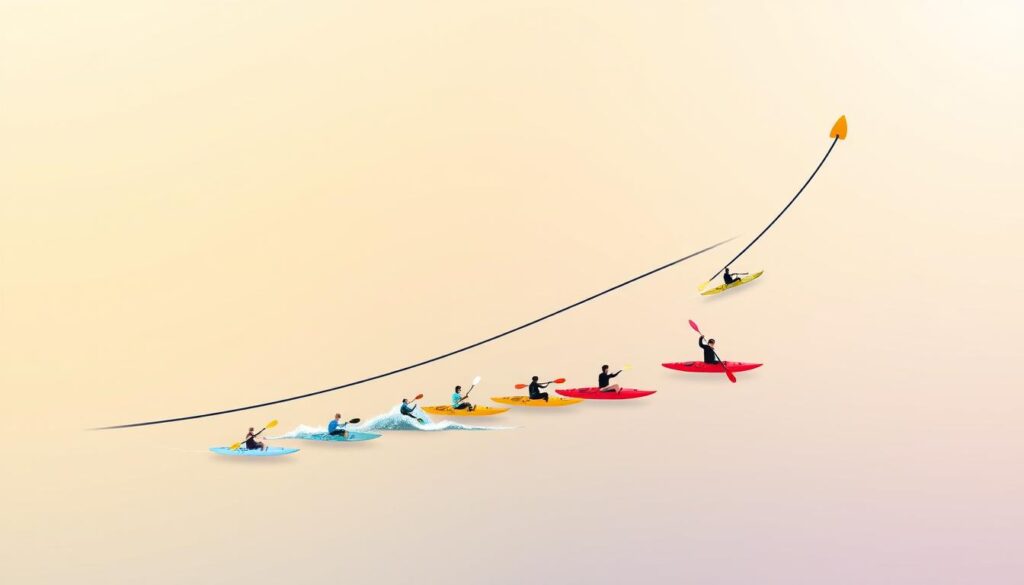
Kayaking might seem tough at first, but knowing the learning curve helps. It shows you can tackle this exciting water sport with confidence. The difficulty of kayaking depends on several important factors that affect your first experience.
Starting your kayaking journey means learning a few basic skills. Beginners find some parts easy, but others need more practice. Here’s what you can expect in your kayaking lessons:
- Physical Skills: Balance and core strength are key for kayaking success
- Technical Knowledge: Mastering paddle techniques takes time and effort
- Water Reading: Getting to know water conditions takes time
“The key to kayaking is patience and progressive learning.” – Expert Kayak Instructor
Kayaking lessons focus on three main skill levels:
- Beginner: Learning basic paddling and staying stable
- Intermediate: Getting better at steering and moving around
Most people pick up basic kayaking skills in a few sessions. Your first challenges will be balancing, learning paddle strokes, and building muscle memory. Remember, everyone starts from the beginning!
Keep in mind, kayaking difficulty varies. With the right teaching and regular practice, you’ll go from a nervous beginner to a confident kayaker.
Essential Kayaking Techniques for Quick Progress
Mastering kayaking takes practice and knowing key techniques. As a beginner, learning these basics will make paddling fun and safe. You’ll feel more confident on the water.
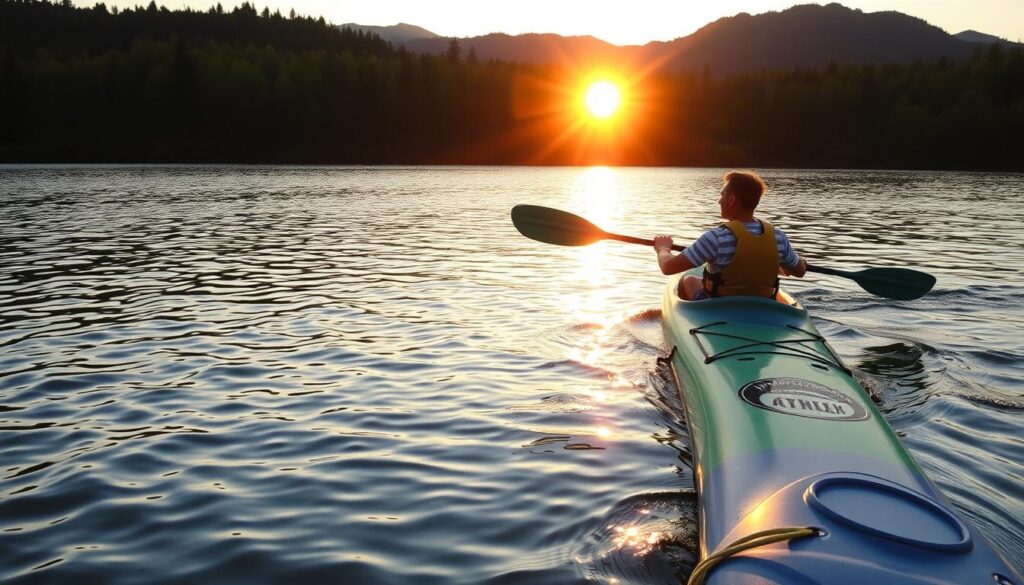
Proper Paddle Grip and Stroke Mechanics
Getting good at kayaking starts with the right paddle grip. Hold the paddle with your hands relaxed, shoulder-width apart. Here are some tips:
- Keep your knuckles in line with the paddle blade edges
- Have a loose grip to avoid getting tired
- Place your hands evenly on the shaft
Basic Turning and Maneuvering Methods
Turning well in a kayak needs the right paddle moves. Learn these basic moves to get better at steering:
- Use the forward sweep stroke for wide turns
- Try the reverse sweep stroke for quick turns
- Use the draw stroke for moving sideways
Balance and Stability Tips
Staying stable is key in kayaking. Practice these tips to improve your balance:
| Technique | Description | Benefit |
|---|---|---|
| Low Brace | Use paddle flat against water surface | Prevents capsizing |
| Hip Rotation | Engage core muscles for control | Improves overall stability |
| Centered Posture | Sit upright with feet braced | Enhances kayak control |
“The key to kayaking is smooth, controlled movements that work with the water, not against it.” – Professional Kayaking Instructor
By focusing on these key techniques, you’ll lay a solid foundation for kayaking. Remember, regular practice will turn you into a confident kayaker.
Common Challenges Beginners Face and How to Overcome Them
Kayaking for beginners can seem scary at first. Every new paddler faces obstacles that make them doubt themselves. Knowing these challenges is the first step to becoming a confident kayaker.
Let’s look at the most common hurdles you might face in kayaking:
- Fear of Capsizing: This is the biggest mental block for new kayakers
- Practice wet exit techniques in safe places
- Take kayak lessons from certified teachers
- Start in calm, shallow waters
- Maintaining Straight Course: Keeping your kayak straight needs the right technique
- Learn the correct paddle stroke
- Practice paddling evenly
- Focus on your core and upper body rotation
- Physical Fatigue: Poor technique can make you tired fast
- Use your core muscles, not just arm strength
- Take breaks and stay hydrated
- Build paddling endurance slowly
“The key to overcoming kayaking challenges is patience and consistent practice.” – Professional Kayaking Instructor
Professional kayak lessons can really help you learn faster. Instructors give you personal advice, teach you about equipment, and boost your confidence.
Remember, every experienced kayaker was once a beginner. These challenges are normal and can be beaten with the right mindset and practice.
Best Places to Practice Kayaking for Beginners
Choosing the right location is key for a great kayaking experience. As a beginner, finding easy spots is crucial. You want calm, predictable water to build confidence and skills safely.
Ideal Calm Water Locations for Learning
Start by picking the perfect place to practice. Look for these beginner-friendly spots:
- Sheltered lakes with minimal wind
- Slow-moving rivers with gentle currents
- Protected bays and inlets
- Calm sections of state parks with water access
Progressing to New Water Conditions
As you get better, try new challenges. Start by introducing slight variations in water conditions – like a lake with mild wind or a river with gentle rapids. Always listen to your comfort level and don’t go too far.
“The ocean is not a place to prove yourself, but to respect and learn from.” – Experienced Kayaker
Finding Supportive Kayaking Communities
Connecting with others can help you learn faster. Here’s how to find beginner-friendly groups:
- Local outdoor recreation centers
- Community kayaking clubs
- REI workshops and guided introductory sessions
The right spot and a supportive community can make kayaking fun and rewarding.
Conclusion
Learning to kayak might seem tough at first. But, knowing it’s easy with the right approach changes everything. Your adventure in this exciting water sport begins with learning basic techniques and gaining confidence slowly.
The secret to mastering kayaking is patience, practice, and choosing the right places to learn. You’ll find that paddle strokes, water dynamics, and balance get easier with time. Every kayaking trip makes you a better paddler.
Every experienced kayaker was once a beginner, just like you. By using the tips from this guide, you’ll grow your skills and confidence. You’re ready to explore rivers, lakes, and coastal waters.
Your kayaking journey is special, and with hard work, you’ll soon paddle smoothly. Start small, stay safe, and most importantly, have fun. Begin your kayaking adventure today.
